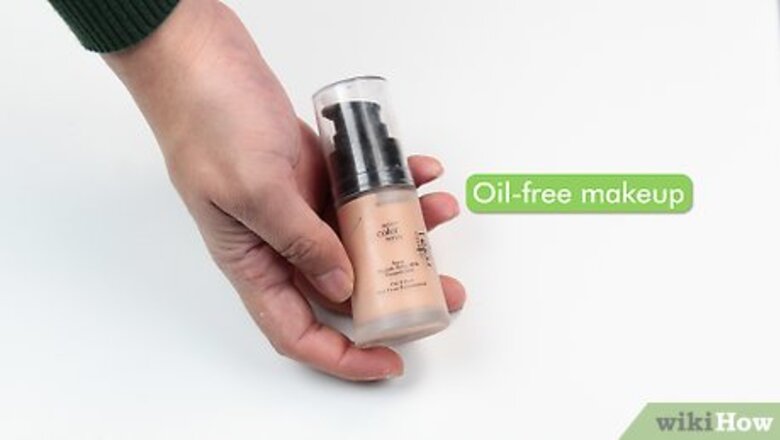
views
Finding the Right Makeup
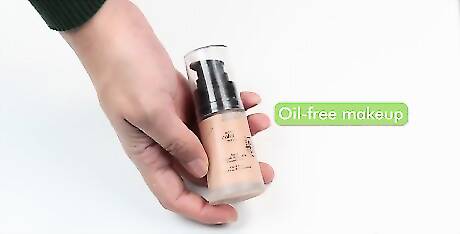
Acquire oil-free makeup. Cosmetics that do not clog pores are called noncomedogenic or non-acnegenic. The first ingredient in your makeup should be water. . Opt for mineral-based cosmetics, which will absorb excess oil and hide redness without irritating your skin. Noncomedogenic makeup does not interfere with acne medication.

Pick the right primer for your skin. Use oil-free primer to keep your makeup in place. It can be especially difficult to keep concealer on an inflamed zit, but a dab of primer does the trick. Lightweight primers are less likely to irritate acne and are easier on oily skin. Use a primer with SPF for protection from the sun, especially if you have scarring or hyperpigmentation. Sun exposure can slow the healing process. Apply the primer all over your face to help your makeup go on evenly and last longer.
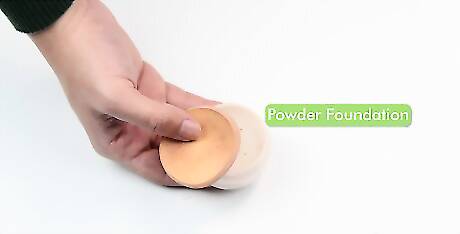
Consider a powder foundation. A mineral-powder foundation is less likely to clog your pores than a liquid foundation, though it will provide less coverage. Opt for mattifying products: they absorb excess oil, and a matte finish conceals bumpiness. Avoid shimmery finish, which will draw attention to bumps. Foundations that are designed to last all day are more likely to clog your pores, causing further acne. If you're interested in light coverage, an oil-free tinted moisturizer can work great on acne-prone skin. It also won't clog pores!
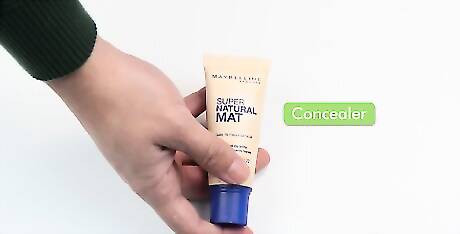
Find or make a concealer that matches your skin tone. Concealer that is too light or dark will highlight your trouble spots, rather than hiding them. Mix two shades of concealer if you cannot find one that matches your skin. Keep in mind that oily skin can oxidize the concealer, which will make it look darker. You can avoid this by choosing a concealer that is 1/2 a shade lighter than your skin color.
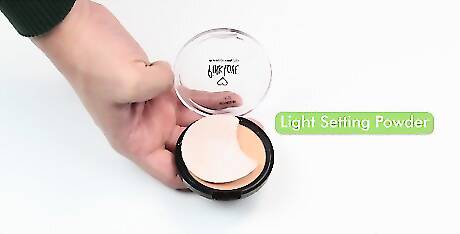
Consider using a setting powder. Setting powder can benefit oily skin, but can exacerbate dryness in other skin. If you choose to use it, find a light setting powder that is less likely to trap oils under your skin.
Applying the Makeup

Clean and moisturize your skin. Before applying makeup, gently wash your face with warm water. Gently rub in a fragrance-free water-based moisturizer. Apply a sunscreen or a moisturizer-sunscreen combination for protection against the sun. Sunscreen does not cause acne unless it contains harmful chemicals such as PABA and benzophenone. To help prevent new acne breakouts, be sure to thoroughly cleanse your skin before bed to remove any signs of makeup.
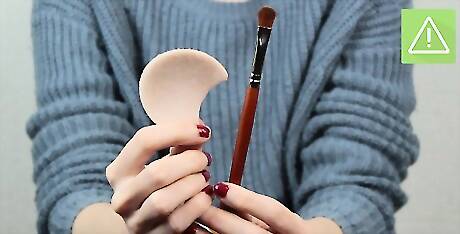
Sanitize your brush or sponge. You can use brushes or sponges to apply your makeup if you would like to avoid touching your skin. Acne can be caused by bacteria on the hands, but sponges or brushes can also hold bacteria, so be sure wash them at least twice a week. Keep your work area clean to avoid spreading bacteria when you put on your makeup. Wash your face and hands before you start, disinfect the surface where you'll be working, and sanitize any brushes and tools you plan to use. Be sure to cleanse your brushes after you finish your makeup application, as well.
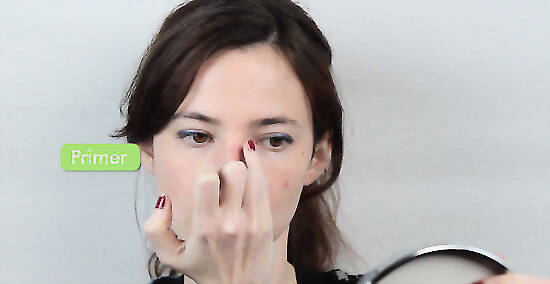
Apply primer. Wait a few minutes to allow your skin to absorb the moisturizer, then use your fingers or a sponge to apply primer. If you prefer not to use a primer across your whole face, you can dab it onto problem spots to help fasten your concealer.
Apply concealer. Wait a few minutes for your primer to set, then apply concealer in an x to your acne. Gently pat it in place. Do not rub, or it may streak. You may prefer to wait on the concealer after you have applied foundation, as foundation will cover many of the milder occurrences of acne. You can use a green concealer to diffuse pigmentation. Never apply green concealer after applying foundation. Alternatively, you could apply a yellow concealer for a more subtle color correction. EXPERT TIP Laura Martin Laura Martin Licensed Cosmetologist Laura Martin is a Licensed Cosmetologist in Georgia. She has been a hair stylist since 2007 and a cosmetology teacher since 2013. Laura Martin Laura Martin Licensed Cosmetologist Choose a green or flesh-toned concealer for red blemishes. Laura Martin, a cosmetologist, says, “You can use a green concealer to cover pimples that are red or inflamed, or you can use a flesh-colored one. If you choose the second option, select one that is about half a shade lighter than your natural skin tone.”

Apply foundation. Wait a few seconds for your concealer to set, then use a brush to apply foundation. Use as little as possible. If your first application seems inadequate, add light, even layers until you are satisfied with the result. If you still have spots, wait a few minutes for your foundation to set, then add concealer. If you are finishing with a setting powder, you can apply it now. With a brush, apply it on your skin in slow circles. Once your foundation has set, you can apply the rest of your makeup.

Finished.















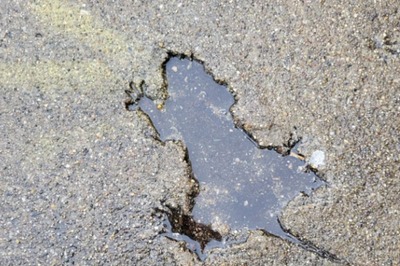

Comments
0 comment